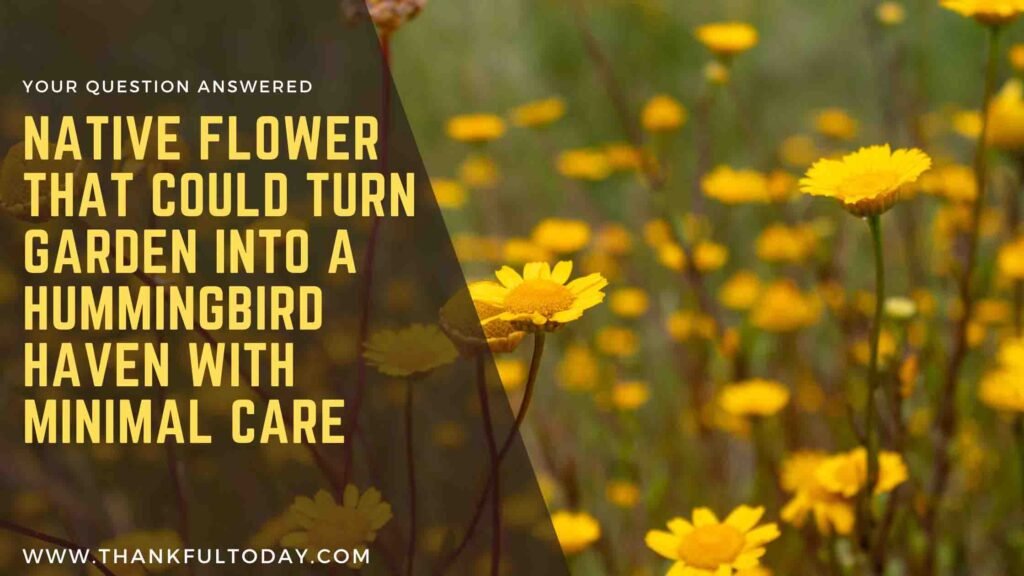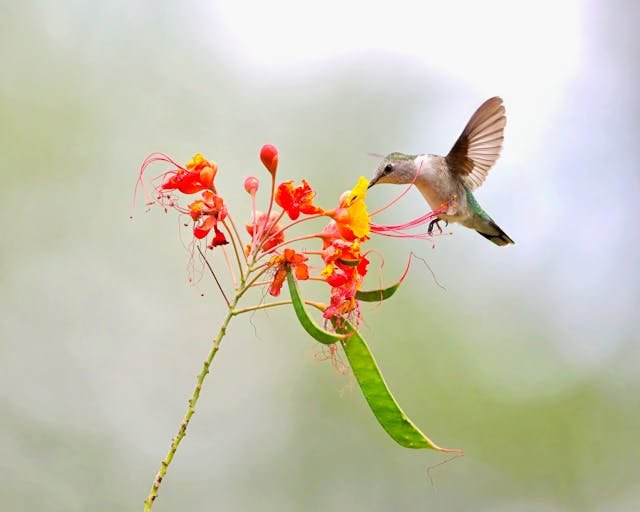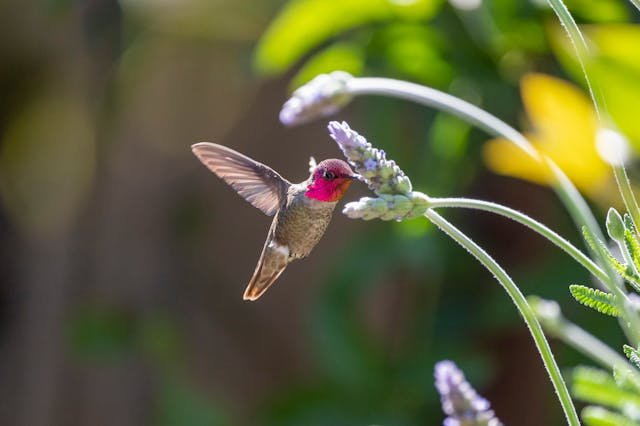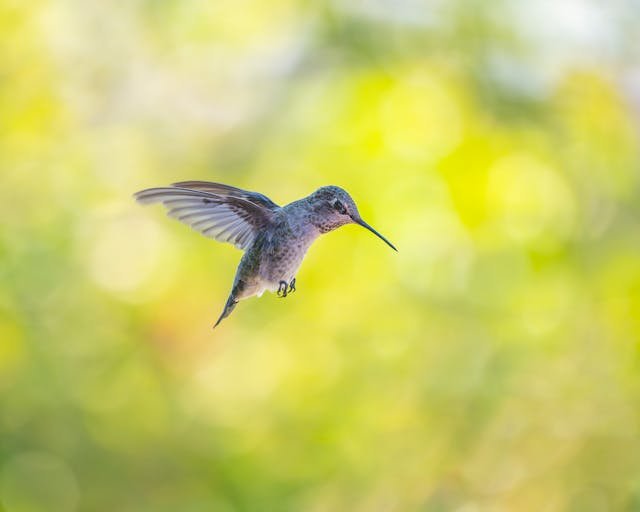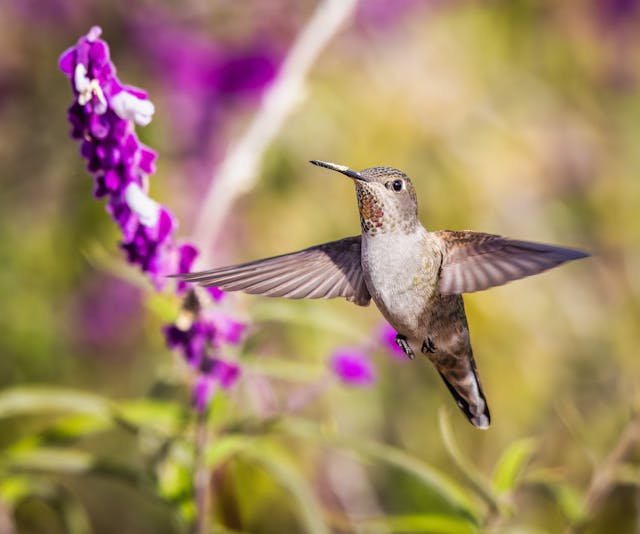Many gardeners seek ways to attract hummingbirds, and native flowers are a reliable choice. These plants provide natural food sources and habitats suited to local hummingbird species. One native flower stands out for its ability to draw these birds consistently.
The trumpet vine is a native flower known to turn any garden into a hummingbird haven due to its bright, tubular blooms that offer abundant nectar. Its structure matches hummingbirds’ feeding habits perfectly, making it an excellent addition for those wanting to see these birds regularly.
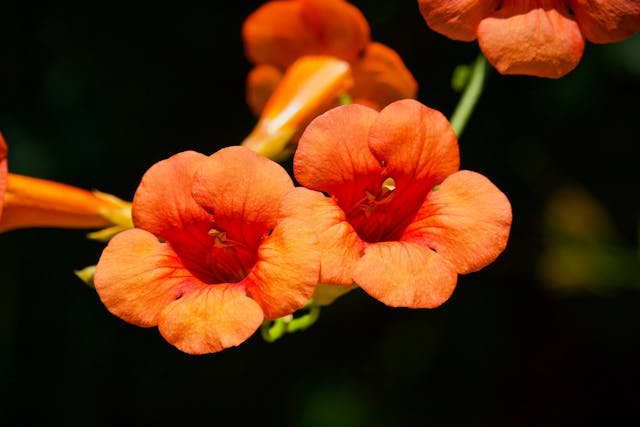
Incorporating this flower into a garden promotes local wildlife without disrupting the ecosystem. It thrives in various soils and climates, making it accessible for many gardeners aiming to enhance their outdoor space with natural beauty and wildlife activity.
Top Native Flowers That Attract Hummingbirds
Certain native flowers provide ideal nectar sources and shapes that suit hummingbirds. Their colors and blooming patterns also make them favorites for these birds seeking sustenance.
Cardinal Flower Blooms
Cardinal flower (Lobelia cardinalis) displays intense red flowers that hummingbirds are naturally drawn to. Its striking spikes bloom in late summer to early fall, which helps maintain nectar availability when other sources decline.
This plant thrives in moist to wet soils and prefers full sun to partial shade. Cardinal flower often grows near water, making it a good choice for gardens with ponds or streams. It adds visual interest while supporting hummingbird populations.
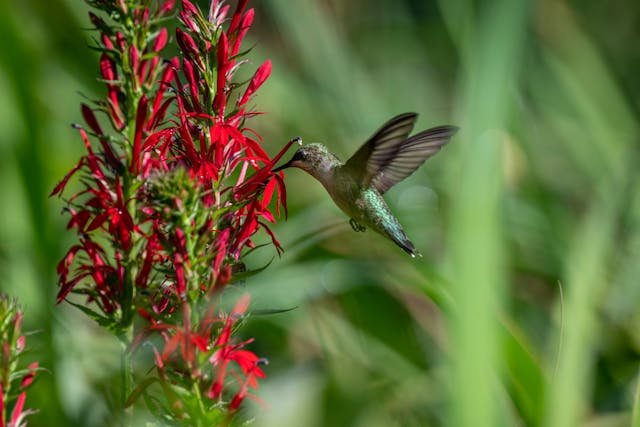
Bee Balm Varieties
Bee balm (Monarda) is popular for its bright, tubular flowers that hummingbirds can easily access. It comes in red, pink, purple, and white varieties, each rich in nectar. The plant blooms from mid to late summer, offering a consistent food supply.
Bee balm grows best in full sun and moist, well-drained soil. Its aromatic leaves also repel some garden pests. This plant attracts not only hummingbirds but also bees and butterflies, enhancing garden biodiversity.
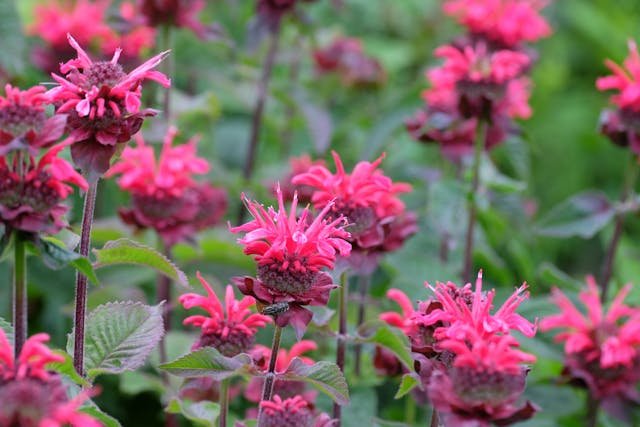
Columbine: A Hummingbird Magnet
Columbine (Aquilegia) features unique, bell-shaped flowers with extended spurs filled with nectar. These spurs are perfectly suited to the tongues of hummingbirds, who can extract nectar more efficiently than other pollinators.
Columbine flourishes in partial shade and well-drained soil, blooming in spring through early summer. The flower colors include reds, purples, and yellows, which are visually attractive to hummingbirds. They are also low maintenance, making them a popular choice.
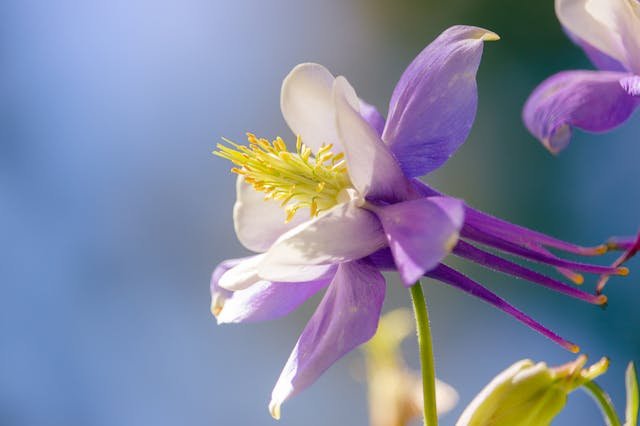
Coral Honeysuckle
Coral honeysuckle (Lonicera sempervirens) is a native vine with tubular, coral-red flowers ideal for hummingbirds. These blossoms bloom from early summer into fall, providing a long-lasting nectar source.
It prefers full to partial sun and tolerates different soil types as long as drainage is good. Coral honeysuckle can quickly cover trellises or fences, creating vertical habitat opportunities for hummingbirds to feed and perch.

Benefits of Cultivating Native Flowers for Hummingbirds
Native flowers provide essential resources that support hummingbird survival and biodiversity. These plants enhance habitat quality and increase the chances of seeing various hummingbird species while aiding local plant reproduction.
Support Local Ecosystems
Native flowers are well-adapted to the region’s climate and soil, requiring less water and fewer fertilizers. This reduces environmental strain and preserves soil health. They form part of a balanced food web, supporting not just hummingbirds but also insects and other wildlife.
By planting native species, gardeners help maintain the natural diversity of their area. Native plants also resist local pests better, minimizing chemical use and promoting healthier ecosystems.
Attract Diverse Hummingbird Species
Different native flowers bloom at various times, offering a continuous nectar source throughout the growing season. This staggered bloom schedule appeals to multiple hummingbird species with differing feeding habits.
Flower shape and color, often red, tubular, and tubular, match hummingbird beak anatomy. Native flowers provide the optimal nectar concentration they prefer. By growing a variety of native flowers, gardens attract more species, enhancing birdwatching opportunities.
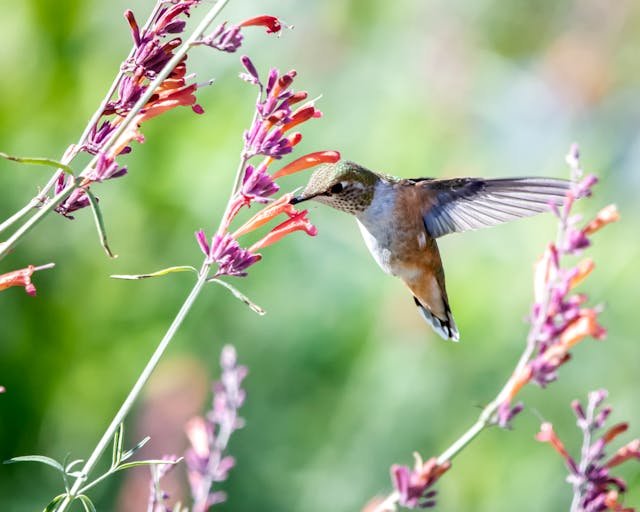
Promote Pollination
Hummingbirds transfer pollen as they feed, aiding the reproductive success of native plants. This natural pollination supports genetic diversity and plant resilience.
Cultivating native flowers improves fruit and seed production in the surrounding environment. It also sustains plant populations without reliance on artificial pollination methods.
| Benefit | Detail | Effect |
|---|---|---|
| Support Local Ecosystems | Adapted to environment, low resource demand | Preserves soil and biodiversity |
| Attract Diverse Species | Bloom times and flower shapes suit hummingbirds | Increases hummingbird variety |
| Promote Pollination | Hummingbirds move pollen between flowers | Enhances plant reproduction |
Designing a Hummingbird-Friendly Garden
A hummingbird-friendly garden requires careful attention to flower locations, varied heights, and a range of colors that attract these birds. Each element enhances the birds’ ability to find food and feel comfortable while visiting.
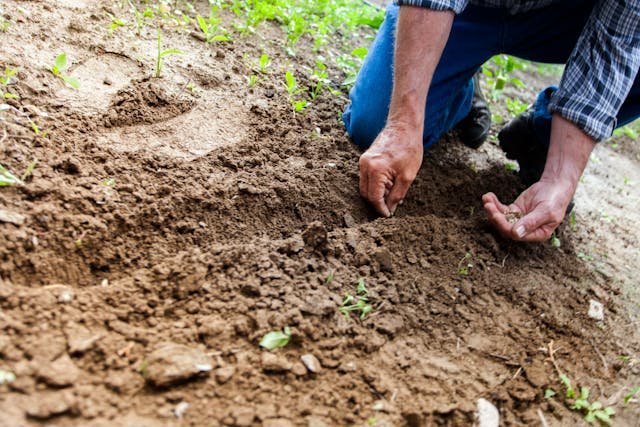
Strategic Flower Placement
Flowers should be placed where hummingbirds can easily access nectar without obstructions. Grouping plants in clusters of three or more increases visibility and feeding efficiency. Positioning flowers near perches such as thin branches or garden stakes encourages resting spots between visits.
Avoid placing flowers too close to windy or heavily trafficked areas, as hummingbirds prefer calm environments. Consider sun exposure too; many nectar-rich native flowers bloom best in full to partial sun, which also supports hummingbird activity.
Layering for Visual Interest
Creating layers with plants of different heights provides shelter and feeding options. Low-growing flowers near the ground, mid-height shrubs, and taller plants or small trees create depth. This set-up mimics natural habitats and supports various hummingbird behaviors like feeding, perching, and nesting.
Layering also supports other wildlife and helps maintain garden microclimates, benefiting both birds and plants. Avoid overcrowding plants by spacing them according to mature size to maintain airflow and visibility.
Incorporating Color Diversity
Hummingbirds are attracted to bright colors, especially reds, oranges, and pinks. Incorporating a variety of these colors increases the likelihood of visits. Different flower shapes and bloom times extend nectar availability throughout the season.
Native plants with tubular flowers are particularly effective. Using a palette of complementary colors can also help the garden stand out while providing easy identification cues for hummingbirds seeking food.
Best Practices for Planting and Maintenance
Proper soil conditions and consistent watering are essential to maximize growth and attract hummingbirds. Adjusting soil composition and maintaining moisture levels support healthy native flowers and their nectar production.
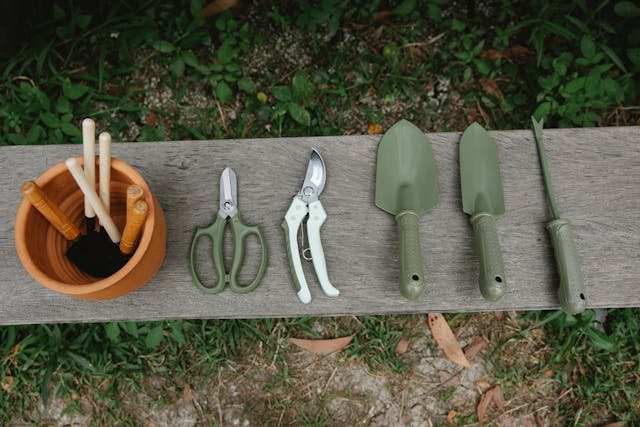
Soil Preparation Guidelines
The soil should be well-drained but able to retain some moisture. Adding organic matter like compost improves texture and nutrient content.
Native flowers thrive in slightly acidic to neutral pH, typically between 6.0 and 7.0. Testing soil pH before planting helps determine if amendments like lime or sulfur are necessary.
Loosen soil to about 6-8 inches deep to encourage root penetration. Remove weeds and debris as they compete for nutrients.
A layer of mulch around the base conserves moisture and suppresses weed growth. Avoid over-compacting soil, which restricts root expansion and water absorption.
Watering Techniques
Water deeply but infrequently to promote strong root systems. Allow the top 1-2 inches of soil to dry before watering again.
Early morning watering reduces evaporation and fungal risks. Avoid wetting leaves directly, which can lead to disease.
Use drip irrigation or soaker hoses to deliver water efficiently, targeting the root zone.
During establishment, plants may require watering every 2-3 days; once mature, watering once per week is usually sufficient unless rainfall is minimal.
Seasonal Bloom Planning for Continuous Attraction
Planning the garden to have flowers blooming in every season is key to maintaining hummingbird visits. Selecting native plants that bloom sequentially from spring through fall ensures a steady nectar supply.
Spring Native Flower Options
In spring, early bloomers like Penstemon and Red Columbine are essential. These plants provide nectar when hummingbirds return from migration.
Penstemon species, with their tubular flowers in shades of red and pink, are particularly attractive. Red Columbine offers both bright color and easy access to nectar.
Including Indian Paintbrush adds vibrant orange-red spikes that stand out against new greenery. Early blooms also give hummingbirds energy for breeding activities.
Summer Bloomers
Summer requires plants with prolonged bloom periods to support hummingbirds during peak activity. Bee Balm (Monarda) is a top choice, offering red, pink, or purple flowers that attract not only hummingbirds but also butterflies.
Scarlet Catchfly features bright red flowers that provide abundant nectar. It thrives in full sun and dry soils, ideal for diverse garden areas.
Cardinal Flower blooms mid to late summer and is a nectar-rich source preferred by hummingbirds. Its bright red flowers also tolerate wet conditions, increasing planting options.
Fall Flowering Choices
Late-season blooms are critical for hummingbirds building energy for migration. Goldenrod is a native with yellow flowers that provide nectar well into the fall months.
Blue Mistflower blooms from late summer through fall with small, blue-purple flowers that hummingbirds favor. It adds color while extending nectar availability.
Trumpet Creeper flowers late in summer to fall, offering trumpet-shaped blossoms that fit a hummingbird’s bill perfectly. It supports late-season feeders and helps maintain garden interest.
Avoiding Common Pitfalls in Hummingbird Gardens
Creating a hummingbird-friendly garden involves careful attention to factors that can impact their health and visit frequency. Proper plant care and pest management play key roles in sustaining these delicate pollinators.
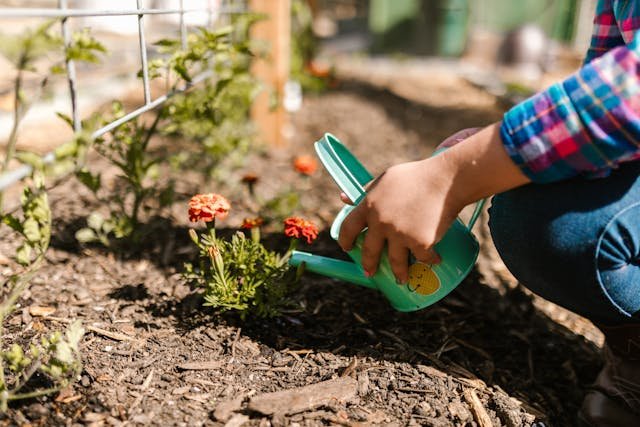
Reducing Chemical Use
Using pesticides and herbicides can harm hummingbirds directly or reduce their food sources by killing insects and flowers. Opting for organic pest control methods, such as neem oil or insecticidal soap, protects hummingbirds while managing garden pests.
Avoid systemic insecticides like neonicotinoids, which persist in plant tissues and can be toxic to hummingbirds. Regularly inspecting plants for pests and removing them by hand is a safer alternative. Maintaining a diverse garden with native flowering plants also encourages natural predators, reducing the need for chemicals.
Deterring Invasive Species
Invasive plants and animals can disrupt the balance of a hummingbird garden by outcompeting native flora or preying on native insects. Removing invasive species like Japanese honeysuckle or English ivy ensures native flowers thrive, supporting the local ecosystem.
Invasive insects such as the emerald ash borer should be managed through biological control or targeted removal. Maintaining habitat complexity with multiple native plant layers helps discourage invasive spread. Consistent monitoring and rapid response are essential to protect the garden’s health and hummingbird visitation.
Enhancing Habitats Beyond Flowers
Creating an inviting space for hummingbirds involves more than planting the right flowers. Water availability and safe resting spots are essential components that support these birds’ daily needs and encourage frequent visits.
Adding Water Features
Hummingbirds require water for drinking and bathing. A shallow water source, such as a birdbath with a gentle mist or dripper, attracts birds without risking drowning. Moving water is preferable over still water because it draws hummingbirds’ attention.
Placement near flowering plants helps hummingbirds find resources efficiently. Regular cleaning prevents algae and mosquito buildup, maintaining a healthy habitat. Avoid deep water dishes and strong currents, as hummingbirds favor accessible, calm water.
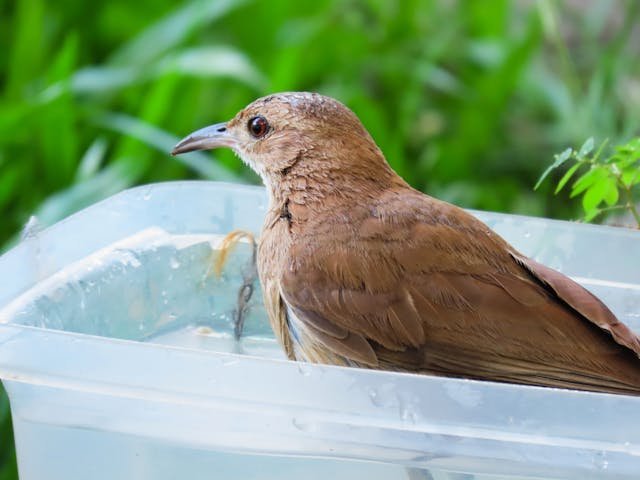
Providing Natural Shelter
Hummingbirds need shelter for resting, protection from predators, and nesting. Dense shrubs, small trees, or brush piles offer safe cover. Plants like willow, dogwood, or serviceberry provide good structural variety and concealment.
Including native plants that produce berries or seeds also supports local insect populations, which are crucial supplementary food sources. Avoid pruning during spring and summer to protect nesting sites and maintain suitable shelter year-round.
